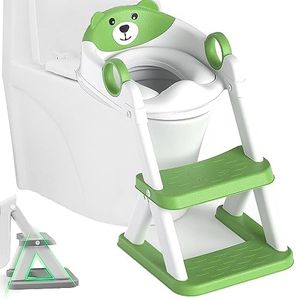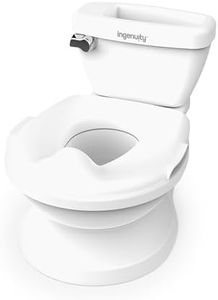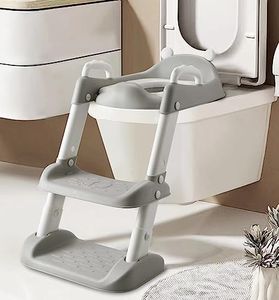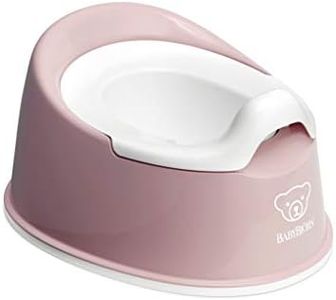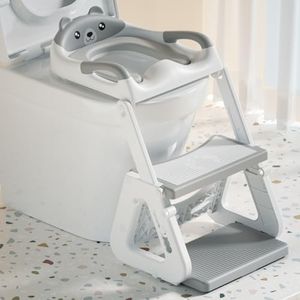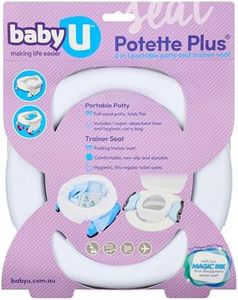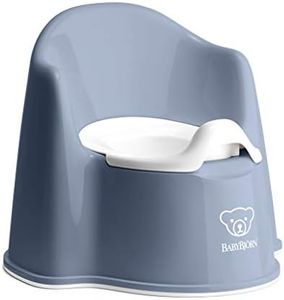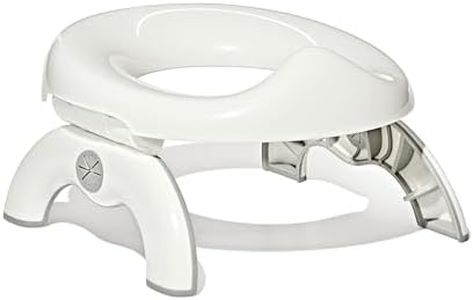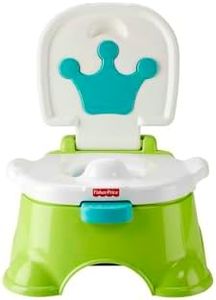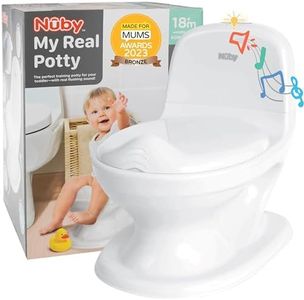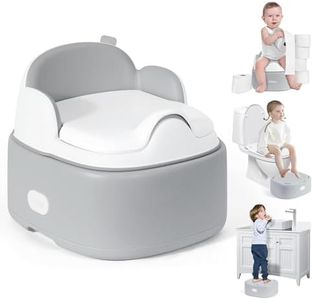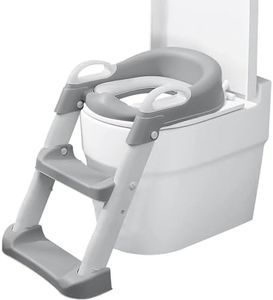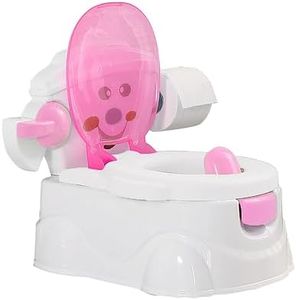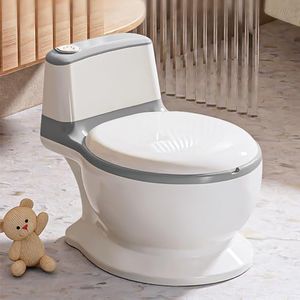We Use CookiesWe use cookies to enhance the security, performance,
functionality and for analytical and promotional activities. By continuing to browse this site you
are agreeing to our privacy policy
10 Best Toddler Potty
From leading brands and best sellers available on the web.Buying Guide for the Best Toddler Potty
Choosing a toddler potty is an important step in helping your child transition out of diapers and learn independence. The right potty should make your child feel comfortable and confident, and it should also be convenient for caregivers to use and clean. Since toddlers can be particular, it's important to consider their preferences, such as color or shape, alongside practical features. Always keep safety, hygiene, and ease of use at the top of your list when evaluating different options.Size and HeightThe size and height of the potty determine how easily your toddler can sit on it without assistance and how stable it feels. Potty chairs generally come in low, medium, and high profiles. Lower potties are easy for smaller or younger toddlers to access, while higher ones can suit taller toddlers or those closer to potty training age. Choosing one that allows your child's feet to touch the ground (or a stable surface) helps with balance and confidence. Consider your child's current height and coordination to pick the most suitable option.
Potty Style (Standalone vs. Seat Reducer)Potty chairs are standalone seats, while seat reducers fit onto a regular toilet. Standalone potties give a child their own little toilet, which can make them feel in control and less intimidated. Seat reducers help toddlers get used to the 'real' toilet but often require a step stool. Think about your home setup, whether your child is nervous about big toilets, and if you'd like the flexibility to use one in different rooms. If you travel often, a portable seat reducer might be most convenient.
Ease of CleaningSince accidents are common, it's crucial that the potty can be cleaned quickly and thoroughly. Look for smooth surfaces, removable bowls, and minimal crevices where germs can hide. Some potties are designed with fewer parts that come apart easily, which streamlines the cleaning process. If hygiene is a priority or your child is prone to messes, choose a design that makes sanitation straightforward for you.
Splash GuardA splash guard helps prevent spills and keeps urine inside the potty, which is helpful for both boys and girls. Some potties have large, integrated splash guards while others have small or removable ones. If your toddler is a boy, larger splash guards might be more effective. However, very tall splash guards can be uncomfortable for some children, so it's important to pick a design that balances protection and comfort based on your child’s anatomy and potty habits.
Comfort and StabilityA toddler will be more willing to use a potty that feels comfortable and stable. Features such as a contoured seat, armrests, or a high backrest can improve comfort, especially for hesitant children. Non-slip bases or stable legs help the potty stay in place during use. If your toddler is active or easily distracted, stability is especially important to prevent tipping. Choose a potty that sits firmly on your bathroom floor and feels cozy for your child to encourage regular use.
PortabilityIf you want to use the potty in different rooms or take it along when you travel, portability is important. Lightweight potties with carrying handles or compact folding designs are easier to move and store. For families on the go, choose a potty that is simple to transport and set up quickly. If potty use will mostly happen at home, a bulkier option might be fine.
Fun FeaturesSome potties offer playful elements such as bright colors, favorite characters, music, or stickers to motivate children. These can make training fun and encourage your toddler to use the potty regularly. However, simpler designs can be less distracting for some children. Think about your child's personality and motivation: will fun features inspire them, or will a minimalist approach keep them focused?
